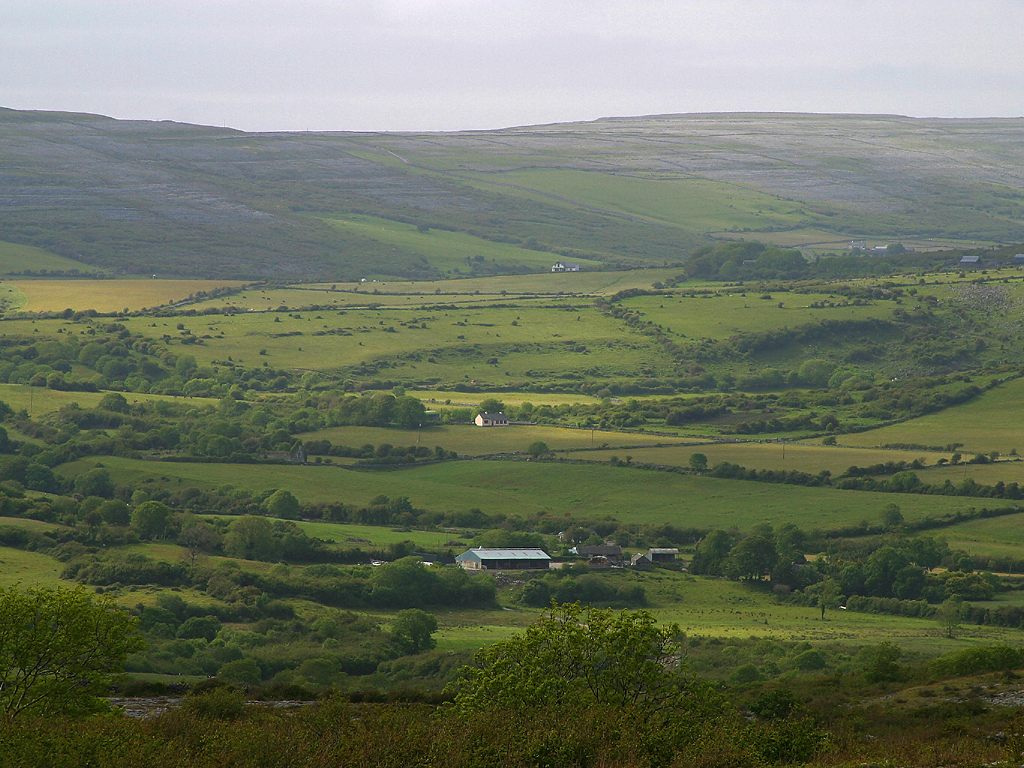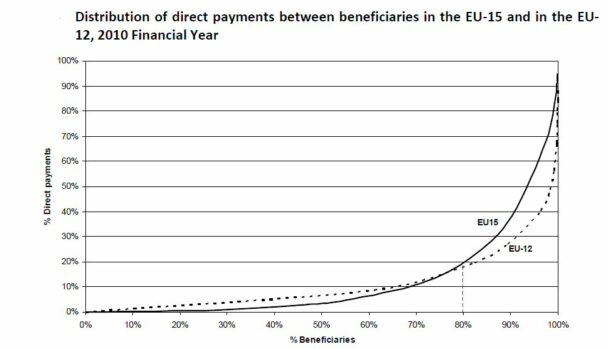The Council announced last Wednesday (October 23) that a political agreement had been reached with the Parliament on the transition measures for agriculture in 2014. This follows the publication of the Commission proposal in April and the adoption of the COMAGRI position in September (the relevant documents are available here in the European Parliament Legislative Observatory)
For direct payments and rural development, the new CAP rules will start to apply as from 1 January 2015. Council and Parliament agreed in June to postpone the implementation of the new rules on direct payments until 1 January 2015, but this seems to be the first time that the institutions have agreed that the start of rural development programmes should be pushed back to 1 January 2015.… Read the rest
Comparing support levels across countries
In the previous post I presented two tables showing Pillar 1 and Pillar 2 payments per hectare by member state which were prepared by the Scottish Executive in support of its campaign to get a higher share of the UK CAP direct payments national ceiling. My focus was on the general story which the tables told on how payments per hectare are distributed across member states, but the tables also show the comparable figures for Scotland as if it were a member state. They show that Scotland expects to be at the bottom of the EU league in terms of Pillar 1 and Pillar 2 payments per hectare by the end of the next MFF period.… Read the rest
Distributing farm payments in Ireland
The Irish Department of Agriculture, Food and the Marine’s consultation on how to implement the new Direct Payments Regulation in Ireland closed last Friday. Ireland is an interesting case study in moving from the historic payment model because of its predominantly grassland-based agriculture and the high dependence of Irish farm incomes on direct payments (the single farm payment alone contributes 50% of Irish farm income). There are significant differences across farms in both the value of payment entitlements per hectare as well as in stocking densities per hectare (the best measure of the intensity of land use in grassland farming), which has given rise to a lively debate on how direct payments should be distributed in future.… Read the rest
The CAP budget in the MFF Part 2 – direct payment envelopes in Pillar 1
In my previous post I discussed some of the difficulties in comparing the money set aside for the CAP in the 2014-2020 Multiannual Financial Framework (MFF) and in the current 2007-2013 MFF. Among the issues highlighted were the counterfactual baseline to be used, whether to compare period-to-period or end-year to end-year figures, and the importance of adjusting the current MFF figures to ensure like-with-like comparisons with the next MFF period.
The European Parliament secretariat’s Note European Council Conclusions on the Multiannual Financial Framework 2014-2020 and the CAP also contains a detailed breakdown of Pillar 1 direct payment envelopes by member state for the two MFF periods, allowing us to see which countries are winners and losers under the decisions taken by the European Council.… Read the rest
CAP reform uncertainty and the market for entitlements
One little-emphasised feature of the current negotiations on CAP reform is that the rules for eligibility for payments under the new basic payment scheme (and thus also the other proposed layers of Pillar 1 direct payments such as the green payment, young farmer’s payment, area of natural constraints payment and redistributive payment where these are adopted) are in a state of flux. New amendments and modifications continue to be introduced at successive stages of the negotiation process. This uncertainty is reflected in the market for Single Farm Payment (SFP) entitlements and the prices farmers are willing to pay for entitlements where they become available.… Read the rest
Impact of CAP subsidies on productivity
I recently had an exchange on Twitter with Martin Crowe, an Irish dairy farmer and agri-consultant, over the apparent stagnation in Irish agricultural output over the past 20 years (follow on @xAlan_Matthews and @martincrowe). I attributed this, in part, to the role that direct payments play in Irish farm incomes. I argued that “If 70% of your income is coming as a cheque in post there is less incentive to innovate to grow the remaining 30%” (direct payments make up around 70% of Irish farm income in an average year). Martin tweeted back that the “70% gives the security and confidence to try and improve the 30%”.… Read the rest
Evolution of the direct payments regulation
In January I prepared a spreadsheet setting out the amendments to the Commission’s proposed direct payments regulation which took account of the COMAGRI rapporteur’s amendments May 2012, the Council’s position as summarised in the Cyprus Presidency document December 2012 and the COMAGRI compromise amendments Jan 2013.
Some readers found this useful so I have now updated the spreadsheet to take account of the COMAGRI proposal for a negotiating mandate in February 2013 (that is, after COMAGRI voted on the compromise and other amendments), the mandate following the European Parliament plenary vote in March 2013, and the successive versions of the regulation prepared by the Irish Presidency for the March 2013 Agricultural Council meeting.… Read the rest
Implications of the new redistributive payment
Ever since direct payments were introduced into the CAP, their unequal distribution has attracted unfavourable attention. The Commission’s 1991 paper The Development and Future of the CAP criticised the distribution of price support, noting that “80% of the support provided by FEOGA is devoted to 20% of farms which account also for the greater part of the land used in agriculture”. Yet the proportions remain exactly the same in both the EU-15 and EU-12 today, according to the Commission’s latest figures for the claim year 2009 (financial year 2010) (see diagram).
Even for those who argue that the specific nature of farming justifies a permanent system of direct payments support, the unequal distribution of support is hard to justify.… Read the rest
Following the negotiations on the Direct Payments Regulation
COMAGRI will vote on compromise amendments to the Commission’s proposals for the four main CAP regulations this week. To understand the dynamics of the legislative process, it is helpful to be able to see the positions of the main institutions side-by-side. I have constructed a four-column spreadsheet table showing, article by article, the positions of the main actors as we know them to date for the direct payments regulation (download the file to your computer by clicking File, Download in the upper left of the Google Drive document when the link opens). The four columns show, for each article:
-
The Commission’s proposal October 2011
The COMAGRI rapporteur’s amendments May 2012
The Council’s position as summarised in the Cyprus Presidency document December 2012
The COMAGRI compromise amendments Jan 2013
I have only had the time to construct this table for the direct payments regulation so far.… Read the rest
COMAGRI draft report on direct payments regulation
The draft reports by the COMAGRI rapporteurs on the four main CAP regulations were published last week. They include reports on the future of direct payments and support for rural development by Mr Luis Manuel Capoulas Santos, the report on the single common market organisation by Mr Michel Dantin, and the report on the common provisions for financing, management and monitoring of the CAP by Mr Giovanni La Via.
In addition, a number of the other EP committees have prepared draft opinions on the proposals – see the Environment Committee here, but also the Development Committee, the Budget Committee and the Regional Development Committee.… Read the rest








